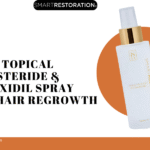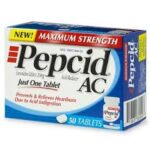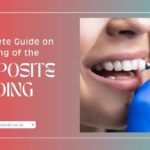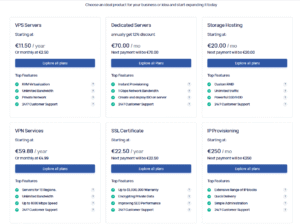Hair loss affects millions of men and women worldwide, impacting confidence, self-image, and emotional well-being. As cosmetic treatments evolve, many people are turning to minimally invasive options before considering surgery. Among these, Platelet-Rich Plasma (PRP) therapy in Dubai(علاج الشعر بالبلازما الغنية بالصفائح الدموية في دبي) has emerged as a leading natural solution for hair restoration. PRP offers a powerful, regenerative treatment that promotes hair growth using the body’s own healing factors—without the need for incisions, scars, or long recovery times.
This guest post explores how PRP therapy works, who it benefits, what to expect during treatment, and how it compares to other hair restoration options.
Understanding PRP Therapy
What is PRP?
Platelet-Rich Plasma (PRP) is a concentration of platelets and growth factors derived from a patient’s own blood. Platelets are critical components of blood that aid in tissue healing, regeneration, and inflammation control. In PRP therapy, a sample of the patient’s blood is drawn, processed to isolate the platelet-rich plasma, and then injected into areas of the scalp affected by thinning or hair loss.
How Does PRP Promote Hair Growth?
When injected into the scalp, PRP stimulates:
-
Follicle regeneration: Enhancing the health of existing hair follicles.
-
Angiogenesis: Formation of new blood vessels to supply oxygen and nutrients to hair roots.
-
Collagen production: Improving the scalp environment and follicle structure.
-
Stem cell activation: Encouraging dormant follicles to enter the growth phase (anagen phase).
This natural boost in cellular activity strengthens hair shafts, increases density, and may reduce hair shedding.
Ideal Candidates for PRP Hair Treatment
PRP is most effective for patients experiencing early-stage hair thinning or androgenetic alopecia (male and female pattern baldness). It can also be beneficial for:
-
Women with diffuse hair thinning.
-
Men who are not ready or eligible for hair transplant surgery.
-
Patients with alopecia areata (to a limited extent).
-
Individuals seeking to enhance hair transplant results.
However, it may be less effective for those with complete baldness or scarred follicles.
The PRP Procedure: Step-by-Step
Initial Consultation
A hair restoration specialist assesses your scalp condition, reviews medical history, and determines your suitability for PRP.
Blood Collection and Processing
-
Approximately 15–30 ml of your blood is drawn.
-
The blood is spun in a centrifuge to separate PRP from red and white blood cells.
-
The concentrated PRP is extracted and prepared for injection.
Scalp Preparation
-
The treatment area is cleaned and a numbing cream or local anesthetic is applied.
-
Microneedling may be used in conjunction with PRP to enhance absorption.
PRP Injections
-
Using fine needles, PRP is carefully injected into targeted areas across the scalp.
-
The procedure takes about 30–60 minutes.
Post-Treatment Care
-
Minimal downtime; patients can resume normal activities the same day.
-
Mild redness or soreness may occur and typically subsides within 24–48 hours.
PRP Hair Treatment Results
Timeline of Results
-
1–2 Months: Reduced hair shedding may be noticeable.
-
3–4 Months: New growth and improved hair texture begin to appear.
-
6–12 Months: Significant improvement in hair density and volume.
Maintenance
To sustain results, maintenance sessions are recommended every 4–6 months after the initial treatment series (usually 3–4 sessions spaced a month apart).
Benefits of PRP for Hair Growth
-
Non-surgical: No incisions, scars, or long recovery time.
-
Natural: Uses your own blood, reducing risk of allergic reactions or rejection.
-
Safe: Low risk of side effects when performed by a trained provider.
-
Effective: Especially in early to moderate stages of hair loss.
-
Combination-friendly: Can be used alongside minoxidil, finasteride, or hair transplant.
Potential Risks and Side Effects
PRP is generally safe, but mild side effects may include:
-
Temporary scalp sensitivity
-
Minor bruising or swelling at injection sites
-
Headaches or itching
Complications are rare when PRP hair treatment(علاج الشعر بالبلازما الغنية بالصفائح الدموية) is administered by a qualified professional using sterile techniques.
PRP Hair Treatment FAQs
| Question | Answer |
|---|---|
| Is PRP therapy painful? | Minimal discomfort; numbing cream is used for comfort. |
| How many sessions are needed? | Typically 3–4 initial sessions, followed by maintenance every 4–6 months. |
| How soon will I see results? | Initial improvements in 2–3 months; fuller results in 6–12 months. |
| Is PRP suitable for everyone? | Best for early-stage hair loss and thinning; not ideal for total baldness. |
| Are the results permanent? | Results are long-lasting but maintenance sessions help prolong effects. |
| Can PRP be used with other treatments? | Yes, it enhances results when combined with minoxidil or finasteride. |
| Is there any downtime? | Minimal; most patients resume regular activity immediately. |
| Is PRP FDA approved for hair loss? | PRP is not FDA-approved specifically for hair loss but is widely used off-label with success. |
| How much does PRP treatment cost? | Prices range from $400 to $1,500 per session, depending on location and clinic. |
| Can PRP work for women with hair thinning? | Yes, it’s highly effective for female pattern hair loss and postpartum thinning. |
PRP vs Other Hair Loss Treatments
| Treatment | Invasiveness | Downtime | Longevity | Best For | Cost Range |
|---|---|---|---|---|---|
| PRP Therapy | Non-invasive | 0–2 days | Long-term with maintenance | Early-to-moderate hair loss | $400–$1,500/session |
| Hair Transplant | Surgical | 7–14 days | Permanent | Advanced hair loss or bald patches | $4,000–$15,000 |
| Minoxidil (Topical) | Non-invasive | None | Temporary (must be continued) | Mild thinning | $20–$60/month |
| Finasteride (Oral) | Non-invasive | None | Ongoing | Male pattern baldness | $10–$50/month |
| Microneedling | Minimally invasive | 1–2 days | Temporary/Supportive | Enhancing other treatments | $100–$300/session |
Who Should Avoid PRP?
-
Individuals with bleeding disorders
-
Patients on anticoagulant therapy
-
People with active scalp infections
-
Pregnant or breastfeeding women
-
Patients with platelet dysfunction syndromes or low platelet count
A thorough medical consultation is crucial to determine eligibility.
Conclusion:
PRP for hair growth offers a safe, effective, and natural alternative to surgery for individuals experiencing hair thinning or early-stage alopecia. By using your body’s own regenerative abilities, PRP stimulates dormant follicles, improves scalp health, and promotes hair regrowth—all without incisions or downtime.
If you’re seeking a proactive approach to hair loss with natural results, PRP therapy may be the perfect fit. As with any medical treatment, choose a qualified and experienced provider to ensure safety and maximize outcomes.
- PRP for Hair Growth A Natural Boost Without Surgery
- PRP for hair growth uses your body’s own platelets to stimulate follicles naturally offering a non-surgical solution for thicker healthier hair.
- PRP for Hair , PRP for Hair treatment
Related posts:
 Best Topical Finasteride & Minoxidil Spray for Hair Regrowth
Best Topical Finasteride & Minoxidil Spray for Hair Regrowth
 Blue Grass Guppy: A Mesmerizing Addition to Your Aquarium Life
Blue Grass Guppy: A Mesmerizing Addition to Your Aquarium Life
 Famotidine Pepcid for Cats: What Pet Owners Need to Know for Their Feline Friend
Famotidine Pepcid for Cats: What Pet Owners Need to Know for Their Feline Friend
 Navigating Mental Health: The Importance of Black Therapists in New York for Bipolar Disorder and Depression Treatment
Navigating Mental Health: The Importance of Black Therapists in New York for Bipolar Disorder and Depression Treatment
 The Benefits of Home-Based ABA Therapy for Children with Autism
The Benefits of Home-Based ABA Therapy for Children with Autism
 How Massage Therapy Can Improve Your Health: A Guide for Queens Residents
How Massage Therapy Can Improve Your Health: A Guide for Queens Residents
 A Complete Guide on the Pricing of the Composite Bonding in London
A Complete Guide on the Pricing of the Composite Bonding in London
 Your brief and useful guide to removable orthodontic appliances
Your brief and useful guide to removable orthodontic appliances







